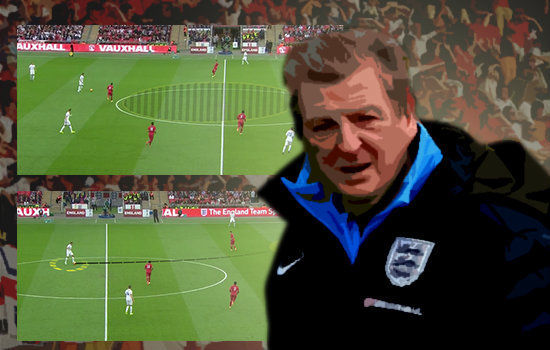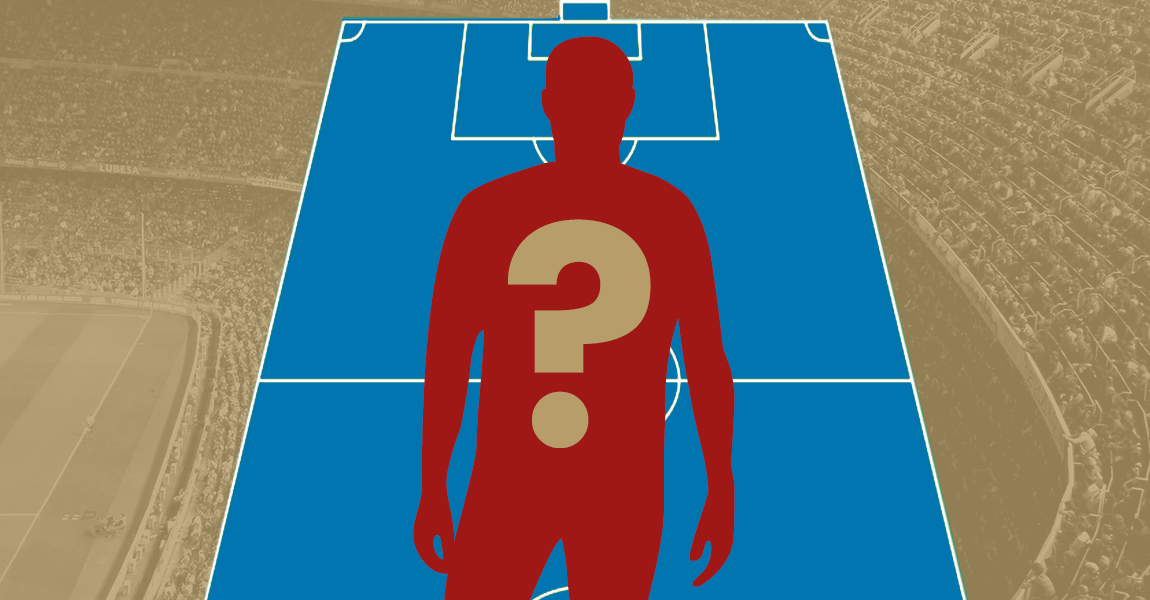Over the course of this decade, tactical evolution has been more evident than at any other point in footballing history – traditional wingers brought in, thrown out; all-out possession football displayed, all-out counter-attacking style implemented; busses parked, busses impounded. Although initially only evident in the major top-flight leagues of the world, it has now crossed the boundaries of global football, the World Cup being the inevitable target this time.
What initially started out as an idea to swap the position of two traditionally oriented wingers, making them play in opposite flanks, for tactical versatility, has now evolved into an entirely new concept that forms the backbone of many teams – the concept of a mobile midfield and inside forwards.
England now seems to have adopted an approach based on a similar conceptual framework. The absence of traditional wingers in the 23-man squad was the first of a few indicators. Although there are many negative defensive implications of the inside-forward system, we’re just going to stay positive for this one.
THE OFFENSIVE SET-UP
Although similarities were seen to the Belgian set-up, it could be easily differentiated now, considering the absence of an all-out defensive midfielder and an out-and-out striker in the English set-up. Also the English inside-forwards seem to play a lot narrower, comparatively.
Midfield can be visualized as a double-layered system. A layer of two central midfielders forms a more rigid base for a rather deep-lying center-forward and a roaming-playmaker above them, forming the mobile layer.
The Center-Forward and Advanced Playmaker are continuously switching roles of connecting passes and making attacking movement between them.

Incorporating three strikers: The initial question is whether Hodgson will opt to start with three strikers even for World Cup matches. The trio amassed a total of 47 league goals between them this season. The decision to start all three did show some defensive vulnerability initially. However, having revised the midfield set-up over the past few friendly-games, this looks very likely now.
Narrow initial attack: Rather than deploying the Inside Forwards out wide, they work on a more converging attacking tangent, narrowing the focus of the attack.
Full back role in widening play: With midfield support, Fullback overlap is what actually widens the play.
Switch-and-bait: The mobile midfield can also work as switch-and-bait on one flank to let the Inside forward move into the box and find space, especially when play is widened and crosses are to be delivered. Since the strikers have easily-interchangeable positions, switching places and drawing defenders in could create quite some space in areas around the box, and also create opportunities if left unmarked.
Less long passing demand: More mobile midfielders mean less long passing demand. Although the deep-playmaker, more than often Gerrard, will need to occasionally make long-range passes to keep play moving, and also regulate game-tempo, the other midfielders can get away with short passing and progressive movement. More than often, Gerrard was seen to opt for a pass towards the Center forward or Advanced Playmaker rather than directly playing long-balls out wide.

Passing to the CF rather than directly to the fullback ensures that there is more room out wide for movement, and also leaves opposition players unnecessarily in midfield. The Deep Playmaker makes a pass towards the Center forward, who moves away from his position to connect the pass out wide
More progressive passing: As compared to the winger-deployed systems, which required frequent re-circulation and switching when the attack on one flank dissipated, the inside-forward systems have seen a lot more progressive passes, since the attack progression is first narrow, and widened later (by fullbacks) when needed.
Also the mobile midfield serves the purpose of connecting passes quicker, rather than having to play the ball back up to the deep midfielders when a forward pass needs to be made.
The call for more individuality: With options like Wayne Rooney, Daniel Sturridge, Danny Welbeck, et al there’s a lot more demand for individuality alongside tactical responsibilities. The forward players will frequently be seen deviating from set duties, especially when strict tactical approaches don’t seem to be working.
Fluidity in play: The system forms the basis for a more fluid form of play, especially since there is a lot more offensive movement as compared to the winger-system.

Large areas in central midfield are left empty when in possession. Little player movement in the area means it can be used to connect passes into the progressive third. The Inside forward or occasionally the Adv. Playmaker move towards the area to receive the pass and progress play.
Besides this, the central areas of midfield are more or less avoided in regard to the new set-up, and passing is a lot quicker in the progressive third.
Assist location: The system (on a general basis) does confine most open-play assists to wider areas and the edge of the box, but things may change, especially when facing opposition with a compact midfield.
Shifting creative stress: With players like Sturridge, Rooney, Lallana in advanced positions, creative duties can easily be shifted to players in forward positions, especially when the opposition press strictly in midfield. Together, the three have made 28 assists in club competitions this season.
The Rooney rule issue: Wayne Rooney’s role in the squad has been put through both questioning and experimentation in recent months. However, under a strict tactical viewpoint, his role seems vital more than ever. In fact, the position he starts in would make the difference. We’ve seen him as the spearhead for England more than often, but he could even start behind Sturridge, another proven goal scorer. More recently, speculation that he may be started as the left inside forward has emerged. The answer may appear in the course of the next round of friendlies.
Altogether, things look better than usual for England. The defensive issues are next in question, but that may all come to light in the first game against Italy, which will prove to be quite a test. A lot more youth, a lot more pace; it wouldn’t be wrong to expect a better performance from the Englishmen this time out.
- Premier League: The Growing Trend Of Counter-Attacking Goals - June 11, 2020
- Analysis | Three Things We Learned: NorthEast United 0-1 Bengaluru FC - December 9, 2017
- Three Things We Learned: NorthEast United 0-0 Jamshedpur - November 19, 2017

























































